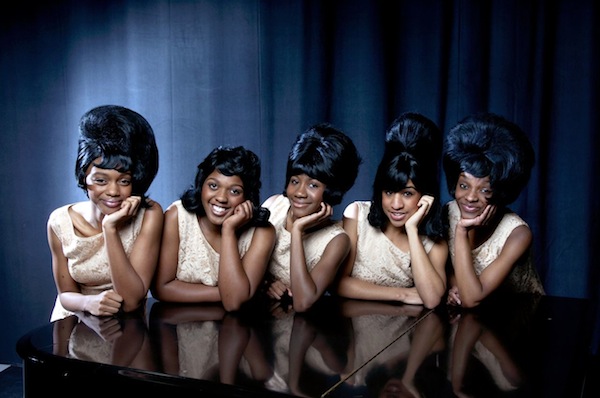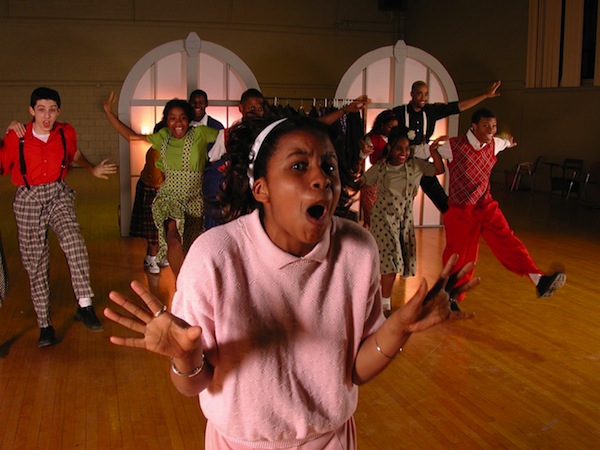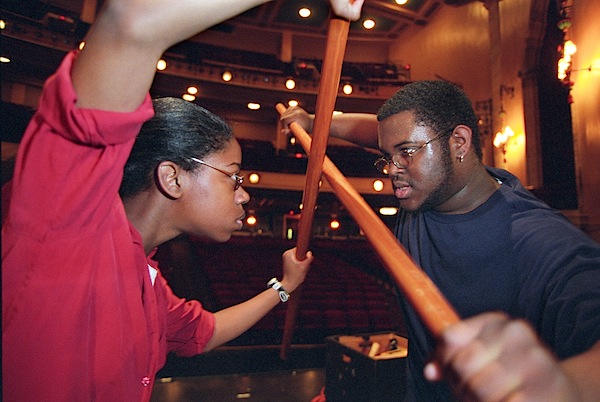As an emerging theatre artist in my twenties, I never planned to spend my career in Detroit. I never dreamed of devoting my life to teenage actors and singers. I wasn’t looking for them, but the incredibly talented young people of Detroit found me. Now there is no place I’d rather be and nothing I’d rather be doing.
Mosaic Youth Theatre of Detroit, which I founded in 1992, is about to start its 22nd season. In that time, our all-teen theatrical and choral performances have toured Africa, Asia, Europe and 25 states throughout the U.S. We have performed for two U.S. Presidents and two Vice Presidents. Our young artists have opened for such legends as Al Green, Harry Belafonte, The Temptations, Pete Seeger, Aretha Franklin, Maya Angelou, The Four Tops, John Legend, and Sweet Honey in the Rock. Additionally, over the past twenty-one years, we have created a cannon of original plays based around the unique stories of Detroit teenagers throughout history, including:
Photo courtesy of Mosaic Youth Theatre
Now That I Can Dance: Motown 1962 about the rise and fall of the Marvelettes, five Detroit-area teenage girls who had Motown’s first #1 hit “Please, Mister Postman” based on oral-history interviews with members of the Marvelettes, Vandellas, Contours, and Miracles.
Crossing 8 Mile: a rewriting of Shakespeare’s Comedy of Errors, mixing stylistic elements of 16th century Commedia Dell’ Arte with a hip-hop aesthetic to make a satirical statement about the division between the city and suburbs of Detroit.
Hastings Street: based on a real-life 1945 meeting between Langston Hughes and group of teenagers living in Detroit’s famed “Black Bottom” neighborhood, considered by many to be the Ellis Island of the Great Migration.
I am amazed by the level of talent that walks through our doors. Not just naturally talented young people, but young people with a hunger to get the training and artistic development they need to succeed. Our alumni have gone on to perform on Broadway and with national touring companies (one, Celia Keenan-Bolger, recently received her second Tony nomination), in the music industry and both in front of and behind the camera in the film industry.
But the untapped talent and creative energy I’ve encountered during my time here was only part of what originally drew me to Detroit.
I grew up just 45 minutes away from Detroit in Ann Arbor, Michigan. I had the benefit of tremendous arts exposure growing up in that university town. My family only ventured into Detroit for sporting events and to see Broadway touring productions.
Like many young artists, I decided that I wanted to create art that made a difference; art that changed people’s lives. After graduating from Oberlin College, I went off to start a career in political theatre. I studied with Augusto Boal, creator of Theatre of the Oppressed at NYU and interned with the Tony-award winning San Francisco Mime Troupe. I returned to Michigan with the plan of starting my own political theatre company in Ann Arbor. Moving myself and some of my colleagues into my parents house (thank goodness for supportive parents) we began mounting theatre productions.
To help pay for our expenses, I got a job for me and two of my colleagues at the Attic Theatre, and Equity theatre in Detroit. Our job was to go into Detroit schools for three to five week residencies and give Detroit teens a theatre experience. The vast majority of Detroit teens go to schools with no drama or music programs. (This is even more true today.)
The experience of going into those schools changed the trajectory of my life.
Photo courtesy of Mosaic Youth Theatre
I was totally blown away by the energy, enthusiasm, hunger and, of course, talent of these teens. After directing these residencies for two years, the Attic Theatre offered us an open weekend in their space to produce the Elizabeth Swados play Runaways with our teens. I didn’t know what I was getting myself into at the time. More than 300 young people auditioned for that show! The production was such a success that the Attic asked us to bring the show back to be the first show of their equity season – the first and only time in Detroit history a professional production has had an exclusively-teenage cast.
I was hooked. I realized that the work I was doing with these teenagers was more dynamic artistically, and in some ways more political, than the work my professional company was producing. There was vibrancy, grittiness, and a powerful life-force in these productions that I had never felt in my work in Ann Arbor – or in New York or San Francisco for that matter. I felt then that we had an opportunity to create a world-class youth arts organization in the city of Detroit. What I would realize years later was that creating this art together was transforming the lives of these young people as well as my own. It was giving Detroit teens–often given low expectations by the adult world–a window to an exciting and ambitious future.
Ten years into the history of Mosaic, we saw an impact that was going far beyond artistic pursuits. We realized that our work was “Youth Development through the Arts.” While Detroit has one of worst drop-out rates in the nation, over Mosaic’s twenty-one year history 95% of our Main Stage performers have graduated from high school and gone on to college. Through a grant from the Wallace Foundation in New York, we were able to partner with the University of Michigan Psychology Department and School of Social Work to do a three-year study of Mosaic’s youth development impact. Among the results we found were:
– 81% of Mosaic alumni “experienced more personal growth and transformation at Mosaic than in any other activity” they participated in as a teenager.
– More than 36% of new Mosaic members stated that they did not expect to attain a college degree – nearly 12% expecting to drop out of high school. After just one year in Mosaic, more than 97% of them expected to graduate from college – with over 47% expecting to pursue graduate school.
The study by University of Michigan also allowed us to define our theory and practice that was leading to these results. I have shared this “Mosaic Model for Youth Development through the Arts” at conferences around the nation. And I’ve had the opportunity to serve on several national advisory committees and think-tanks exploring the power of the arts to empower young people, especially those in urban areas.
What drew me to Detroit was a combination of need and opportunity. As a person who wanted my art to make a real impact, it was clear that there was a strong need for high-level training and performing experiences. But there was also a tremendous opportunity – the ability to harness the hard work of talented young Detroiters into the creation of theatrical and musical art that would bring national and international acclaim to our city.
I believe what continues to inspire artists (as well as urban planners, entrepreneurs, urban farmers and other forward thinkers) to make Detroit their home is this unique combination of need and opportunity. Mosaic’s first tour to Europe, representing the U.S. at the World Festival of Children’s Theatre, happened only four years after I started Mosaic. I don’t know anywhere else in the country where I could have gone, to use a car analogy, “from zero to fifty” as fast I did than in the Motor City.
What keeps me inspired after twenty-one years is that this combination continues to persist as strong as ever. There is a concerted effort in Detroit to improve our struggling educational system and to bring dynamic development to our neighborhoods – in addition to the exciting increase in development we have seen in our Midtown and Downtown areas. To that end, Mosaic is partnering with the Thompson Educational Foundation to become the Arts Organization in Residence at the new University Prep Science and Math elementary school.
This school will be located in a state and national historic landmark on Detroit’s lower east side that has been sitting empty for the past 6 years – the former Miller High School, where that famous meeting with Langston Hughes took place years ago. Miller was Detroit’s first predominantly African-American high school that launched giants of music (Jazz legends Yusif Lateef, Kenny Burrell and Milt Jackson), politicians (former Detroit Mayor Coleman Young), and sports figures (both pro-athletes and Olympic Gold Medalists).
This partnership will provide Mosaic with a sustainable home for our arts/youth development programs for young people from more than 50 schools throughout metro Detroit for the next twenty years – until 2033! It will also bring density and vibrancy to an emerging neighborhood. And finally, it will allow Mosaic to be at the forefront of the national movement to change STEM education (Science, Technology, Education, and Math) to STEAM by adding an A for Arts. As Arts Organization in Residence, Mosaic will be working with the school’s staff to infuse the arts into the science- and math-focused curriculum.
As our city struggles with the prospect of municipal bankruptcy, the staff and young artists at Mosaic are not hanging our heads. We know that we have incredible talent and resourcefulness in this city and we are ready to roll up our sleeves and be part of Detroit’s next renaissance. Yes, we have tremendous need here. But exciting opportunities abound ahead.



